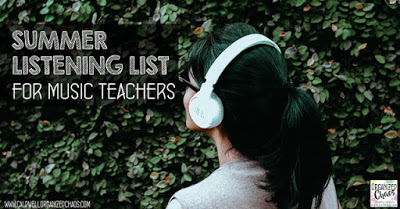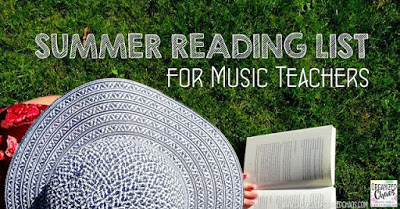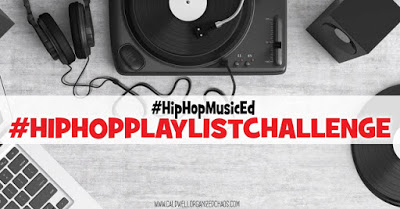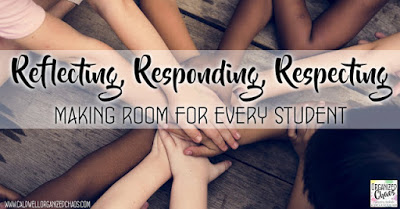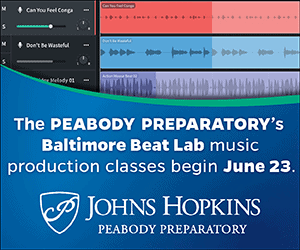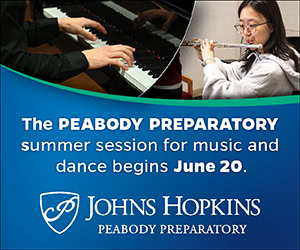/ News Posts / Music Teacher Resources for School Closures
Music Teacher Resources for School Closures
(Including Online and No Tech Ideas)
By NAfME Member Elizabeth Caldwell
This blog was first published on “Organized Chaos.”
Join NAfME today
We are living in unusual times, to be sure.
My school district, along with many others around the world, is closed indefinitely in an attempt to slow the spread of COVID-19 (known widely as Coronavirus). As we go through this time of uncertainty, I know many of us are scrambling to find ways to continue to provide music learning opportunities for our students without actually being in school. Whether you’re hoping to move to online/virtual teaching, provide students with online resources, or put together no-tech resources for families without internet or technology access, here are some resources to help.

1. Virtual Teaching
If you’re looking at setting up an online classroom or teaching virtually, Michelle from The Musical Rose has been teaching music virtually for a few years now, and she has put together resources for music teachers looking to teach online. Click here to visit her website, where you’ll find links to her social media accounts where she is posting her most updated content, and click here to view the slides from her Facebook live presentation on using Zoom and Nearpod, along with general tips for online teaching (including general music and ensemble rehearsals!).
If you have a private lesson studio as well, Ashley Danyew has some excellent ideas and resources to transition private lessons and studio group classes to online teaching. Click here to read her post, where she outlines different online platforms for live lessons, pre-recorded videos, and activities to send home, templates for letters to send to parents, and other advice for private lesson teachers.
2. Online Resources
If your students have reliable internet and device access, there are plenty of resources available for music teachers, and many are being offered for free temporarily to support school closures or already offer free options! Check out each of these below to explore these options—obviously this list is not exhaustive, so feel free to share others you love in the comments on my blog or on Amplify:
- SmartMusic (currently being offered free through June 2020 to closed schools)
- MusicPlayOnline (free trial available)
- Solfeg.io (free plan available)
- Prodigies Music Lessons (their YouTube channel has lots of free lessons)
Of course, there are plenty of online resources that can be used as tools or exploration opportunities:
- Chrome Music Lab
- Incredibox
- SFS Kids
- Classics for Kids
- Carnegie Hall: Young Person’s Guide to the Orchestra
- Mixxx: Free DJ Software
- Word Synth
For more ideas incorporating technology in music teaching, my top recommendation is Midnight Music. Katie has been involved in music education technology for years, and she has excellent resources and information on her website—go explore her site right here. You can also find more ideas in Facebook groups specifically dedicated to sharing ideas for online music teaching during school closures, so if you are on Facebook you can search for those as well.
3. No Tech Resource Ideas
For my district, we are preparing paper and pencil packets for students. We are not one-to-one with devices, nor does every family in our district have reliable internet access, so we have chosen to provide resources that can be accessible to everyone. If you are looking for student learning resources that don’t require technology or internet access, Charissa from Music with Mrs. Dunc has a free take-home packet you can download here for elementary general music. The packet includes rhythm and pitch practice, composition, and more without any need for technology!
Here are some more ideas you can use with a range of grade levels:
- Interviews: Have students interview family members about their musical backgrounds and interests. What is their favorite song right now and why? What instruments do they play? What does music mean to them? Who are their favorite artists? Students can record the responses they get and also answer the questions themselves.
- Instrument invention: Have students invent a new instrument. They could draw a picture of it and describe how it is played, how it’s constructed, and what it sounds like, or they could make one out of recycled materials.
- Hand-washing dance choreography: Have students choreograph a short dance routine incorporating the different ways we’re recommended to wash our hands (scrubbing nails, between fingers, etc). Check out this one for inspiration.
- Listening log: Have students write down music that they hear each day. Depending on the age, they can also record information about the songs, like the title/artist, genre, mood, time signature, tempo, instrumentation, etc., or they could draw a picture in response to the music.
- Singing log: Have students write down songs that they sing each day. They can sing along with a recording, sing by themselves, or sing with their family.
- Soundtrack of my life: Have students create an imaginary album that shows who they are. They can make a list of song titles, and for each song describe the music—this could be done either by asking students to come up with their own imaginary songs or by having students find existing songs that would describe aspects of their personality/life. Students could also design an album cover to go with it, write liner notes, etc.
- Instrumental / choral practice: Of course, if students have sheet music for choir songs, instrumental method books, recorder music, etc., then they can practice their music! Include tips for independent practicing, fingering charts, etc., to help students maintain productive practice.
4. Professional Learning Opportunities
With more flexible schedules and some extra time on our hands, this is a great time to do some reflecting and learning ourselves! Elisa from Music Ed Mentor has compiled a list of online professional learning opportunities for music teachers in this post, and you can find more ideas including book and listening recommendations in these posts below:
With all of the information and debating swirling around, let’s remember to be deliberate and compassionate. Let’s all help each other as we forge new paths—please share ideas in the comments on my blog or on Amplify to help other teachers support their students!

About the author:
 NAfME member Elizabeth Caldwell has been teaching elementary general music and choir for over a decade and cannot imagine ever doing anything else. She is also the author of the website, Organized Chaos Music, where she regularly shares organization strategies, lesson plans, and other ideas to encourage purposeful creativity in the music classroom. She holds her B.M.E from Wheaton College (IL) and her M.M.E. from Boston University, and was named Teacher of the Year in 2018. She has presented on lesson planning, restorative behavior management, effective recorder teaching, world music, National Core Arts general music standards, and other music education topics at conferences around the globe, and teaches an e-course on lesson planning through her website.
NAfME member Elizabeth Caldwell has been teaching elementary general music and choir for over a decade and cannot imagine ever doing anything else. She is also the author of the website, Organized Chaos Music, where she regularly shares organization strategies, lesson plans, and other ideas to encourage purposeful creativity in the music classroom. She holds her B.M.E from Wheaton College (IL) and her M.M.E. from Boston University, and was named Teacher of the Year in 2018. She has presented on lesson planning, restorative behavior management, effective recorder teaching, world music, National Core Arts general music standards, and other music education topics at conferences around the globe, and teaches an e-course on lesson planning through her website.
Follow Elizabeth on Facebook, Instagram, Twitter, YouTube, and Pinterest.
Did this blog spur new ideas for your music program? Share them on Amplify! Interested in reprinting this article? Please review the reprint guidelines.
The National Association for Music Education (NAfME) provides a number of forums for the sharing of information and opinion, including blogs and postings on our website, articles and columns in our magazines and journals, and postings to our Amplify member portal. Unless specifically noted, the views expressed in these media do not necessarily represent the policy or views of the Association, its officers, or its employees.
Catherina Hurlburt, Marketing Communications Manager. March 17, 2020. © National Association for Music Education (NAfME.org)
Published Date
March 17, 2020
Category
- Uncategorized
Copyright
March 17, 2020. © National Association for Music Education (NAfME.org)

